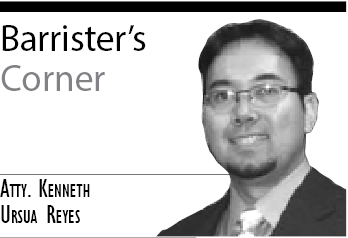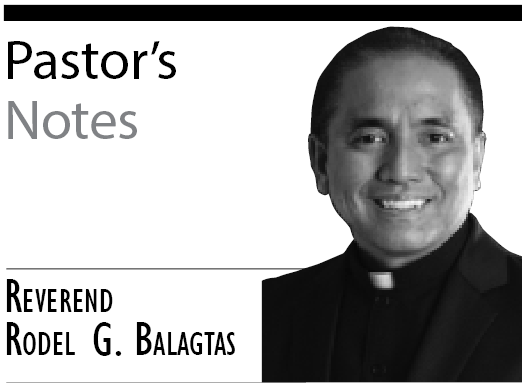“Some people just don’t understand what we are doing here. I think we can all work together to uphold artistic freedom and appreciation of art’s place in a democratic society.” – Emily Abrera, Chairman of the Board of Trustees, Cultural Center of the Philippines
Art is a human inclination that has been around since the first human being walked the earth.
It has been in existence way before the concept of organized religion came into being.
It is an inherent sense of expression, using visual images to depict life.
Art is limitless, just as the human imagination is infinite. It can cover religion, science, politics, philosophies, emotions, logic and just about anything that the human mind can conceive and conceptualize. It does not need to conform nor limit itself to moral values.
In the past, there were movements in art which were considered subversive — with some even bordering on sedition.
Those who devised the Constitution are aware of the limitless scope of human capabilities and of the importance of certain freedoms to human existence. They ensured that some of these freedoms remain untouched. The freedom to express one’s self became a basic right, inasmuch as freedom to choose one’s religion could not be dictated by the laws of men.
However, this does not seem to be the scenario at the Cultural Center of the Philippines, where currently the gallery exhibiting the “Kulo” installation has been shut down due to public outrage — and especially from Catholic Filipinos and the Catholic Church.
Mideo Cruz’s mixed media installation, “Politeismo,” has been deemed “sacrilegious” and “blasphemous” by some sectors.
In Inquirer.net’s editorial, “Art as Terrorism,” Cruz’s artwork was described as “consisting of a collage of religious posters and images, apparently mainly culled from old religious calendars showing the Blessed Mother, the Holy Family and saints from the Roman Catholic martyrology and hagiography, as well as old crucifixes and crosses. The religious images are pasted side by side advertising posters showing capitalist and Hollywood icons such as Marilyn Monroe, Mickey Mouse and American President Barack Obama.”
“Cruz has explained that his work seeks to represent Philippine history as one of ‘idol worship,’ from the Spanish period (when the Filipinos acquired their Catholicism) to the American period (when they acquired their consumerist and colonial mindset). Hence, the work’s title, ‘Polytheism,’ the worship of many gods. But what about the phalluses and the condoms and why are they stuck on the faces of the Catholic images? They are symbols of ‘patriarchy’ and repression of women.”
Members of the Senate have suggested the need for a senate inquiry on the matter, with Sen. Tito Sotto threatening to withhold public funding for the CCP and Sen. Jinggoy Estrada calling for the resignation of the members of the CCP Board.
If people were complaining about taxpayers’ money being wasted on the CCP’s art exhibit, isn’t this an even bigger waste of government resources? After all, the CCP Board has not committed any crime, nor any form of civil disobedience.
Even presidential spokesman Edwin Lacierda was quick to reason that Cruz “has the right to express himself through his artworks and giving him sanction might amount to censorship.”
However, the issue does not lie on Mideo Cruz’s controversial artwork alone.
In the bigger scheme of things, this would eventually lead to a broader discussion — how far can artists take their freedom to express themselves?
In a closed-door meeting with CCP officials, Pres. Aquino said that “there is no freedom that is absolute. There are limits set as to what you’re allowed to do. I made my position very clear to them [the CCP Board], and I did stress the idea that you have rights, but if you trample upon the rights of others, I think there is something wrong there.”
The president, however, clarified that he is not after censorship. “Art is supposed to be ennobling and when you stoke conflict, that is not an ennobling activity,” he said.
But what does “ennobling art” mean? Does giving nobility or greater dignity mean that art should only be about beautiful things? What about finding beauty or wisdom in imperfection? Beyond aesthetic value, shouldn’t art be something that would make us stop, think and re-assess our own value system?
The value of an artwork is not measured only by its ability to please, but by its power to provoke thoughts, stir the imagination or change a way of thinking.
CCP Chair Emily Abrera said it best: “It is part of our culture to question, to seek answers, to look behind the surface and try to dig out what our real values are.”
Even if 85% of the general population are Catholics/Christians, it does not mean that the rights of the remaining 15% should be undermined. If absolute freedom of expression does not exist, then there should be no absolute freedom of religion either — regardless of whether it is the religion of the majority.
Article 2 Section VI of the 1987 Constitution of the Philippines states that “the separation of Church and State shall be inviolable.”
Inasmuch as it was not out of line for Carlos Celdran to be reprimanded for “sacrileging” the hallowed grounds of the Catholic Church with his “Damaso” stunt during a holy mass, the Catholic Church should also respect the Cultural Center of the Philippines’ sense of purpose: to serve as the nation’s sanctum for artistic freedom.
(www.asianjournal.com)
(LA Weekend Aug 13-16, 2011 Sec A pg. 12)
Back To Top




